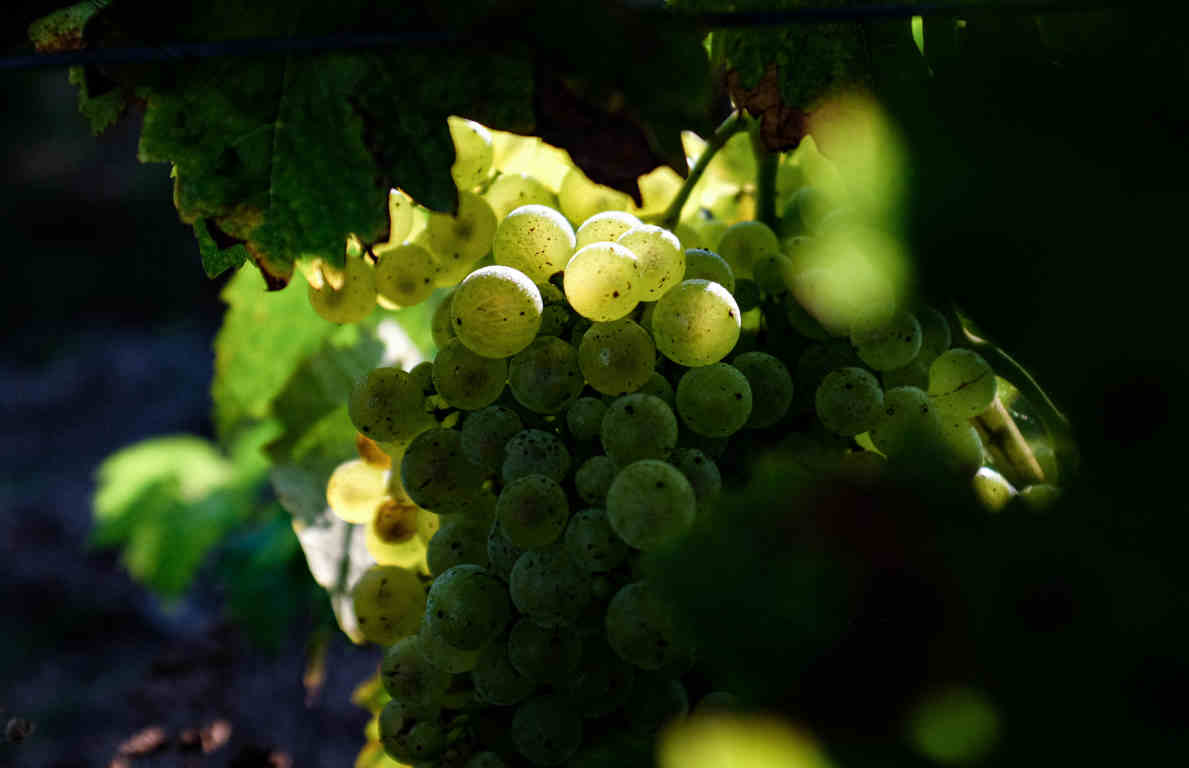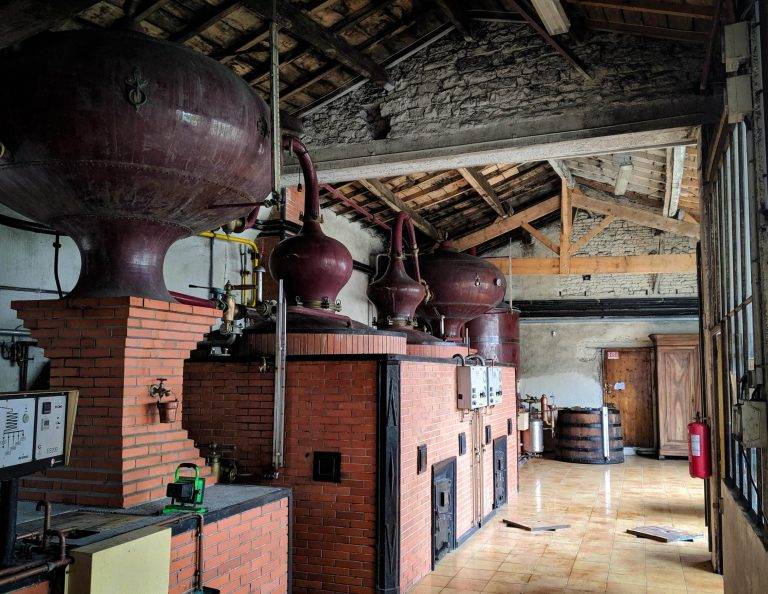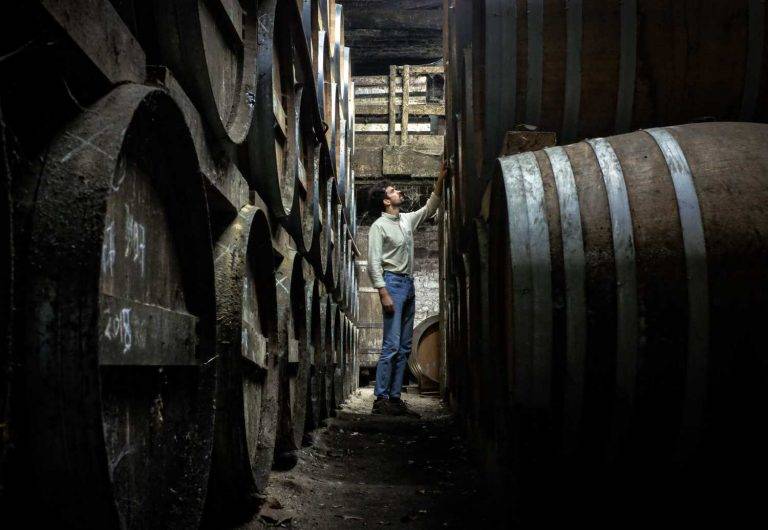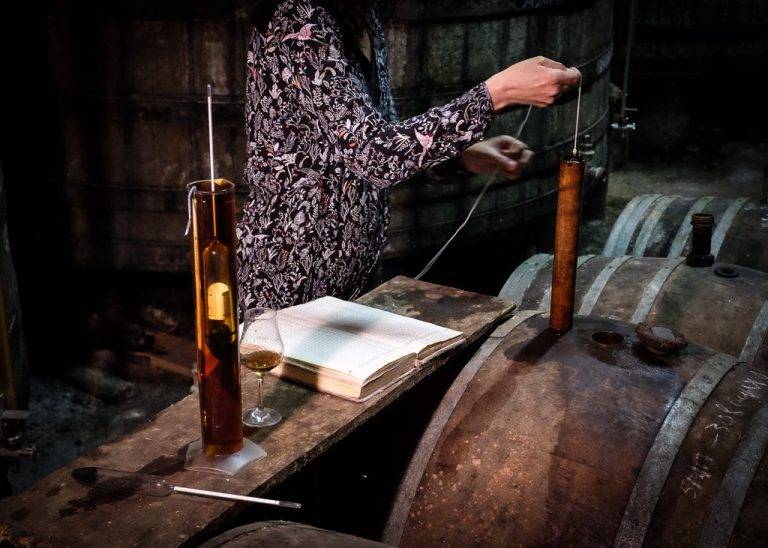Cognac in the Making
Winemaking - Transforming Grape Juice into Wine
When it comes to making Cognac, everything starts in vineyards as grape juice is the raw material of the drink, which often is an overlooked fact about Cognac! This inherently places Cognac in the family of Brandies – a spirit obtained by distilling fruit – however it has some distinct characteristics from its close cousins. For instance, the Cognac production zone is geographically delimited to a specific territory and only a selection of white grape varieties – Ugni blanc, Folle-Blanche and Colombard – will make it into the final product. After a carefully monitored maturation process, grapes are harvested, pressed into juice then fermented into wine.
A high level of acidity and a low alcohol volume – typically 9% ABV or less – are the trademark of these wines which are bound to be transformed into spirits through the process of distillation. As part of our commitments towards environmental responsibility we choose to source organic wines only for the preparation of our own spirits.

The Distillation of Wine and Creation of Spirits
To put it in a nutshell, the distillation process aims at extracting the alcohol contained in wines to obtain spirits – practically speaking, this involves heating wine up to 78.3°C which is the boiling temperature of ethanol, to separate it from water which boils-up at 100°C along with other components. Alcohol vapours will evaporate first, then cool down by passing through a condensator to regain a liquid shape. In the case of Cognac, this process is repeated twice to obtain the final product, this is the principle of double-distillation. The distillation process is completed when most of the alcohol contained in the distilled wine has been extracted, leaving nothing but wine residues behind or “vinasses” as is it called in the Cognac region.
Not all spirits obtained through the distillation process will make it into the final product however! Specific portions will be separated by the distiller, to be discarded or distilled yet another time. Simply put, ” the heads” or first liters of alcohol obtained at the early stage of the distillation process and “tails” or last liters obtained will be cut from the spirits “heart”, which is the final product. This process of separating alcohol known as “the cut” varies depending on Distilleries’ tradition or the know-how of a master-distiller and often grants Cognac some very specific characteristics. To dig deeper into this subject, you can read our article about Cognac Distillation.

Ageing and Maturation of Cognac

Blending Cognac

